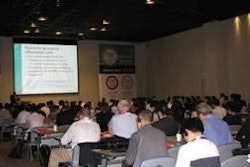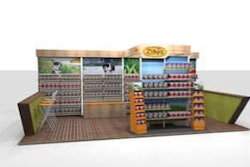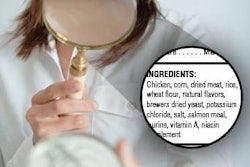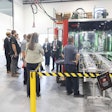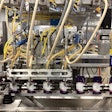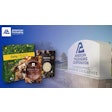
As of January 4, 2013, the Food and Drug Administration had released for public comment a proposed rule on Preventive Controls for Human Food and a proposed rule on Standards for Produce Safety. These rules are two of the proposed rules that are key to the preventive food safety approach established by the 2011 Food Safety Modernization Act (FSMA), according to Bob McDonald of Food Safety Validation.
"The proposed rules build on existing voluntary industry guidelines for food safety, which many producers, growers and others currently follow," he said. "The Food and Drug Administration (FDA) expects to soon issue its proposed rule on importer foreign supplier verification; future proposed rules will address preventive controls for animal food and accreditation of third-party auditors." Facilities will be required to establish modern preventive controls that are consistent with the internationally recognized principles of HACCP (hazard analysis and critical control points).
So what does that mean to petfood producers? And are there any new preventative steps you should be taking?
According to Michael R. Taylor, deputy commissioner for foods at FDA, the first major milestone in implementing FSMA is the issuance of four foundational proposed rules that are critical to fulfilling the FSMA vision of a modern, prevention-oriented food safety system. They are:
- Preventive controls for animal food;
- Preventive controls for human food;
- Produce safety; and
- Foreign Supplier Verification Program.
The rulings for produce and human foods have been released, but these can be slightly confusing since the preventive control for human food rules issued include petfood in the definition of food covered by the rule and even define restaurants that include kennels. According to McDonald, FDA will issue a separate preventive controls rule for petfood in the near future—it could be an addendum to the preventive controls rule for human food or it may be a full explication—but the rule will have the same types of requirements except it will identify petfood safety hazards for pets and humans. For example, the animal food proposed rule does not require controls for allergens, since severe allergic reactions are not common in animals, explained Taylor.
"We are using the human food draft rule to get started on all petfood safety validation and verification activity. The general principles for the rules are the same," explains McDonald. "They are science and risk-based, flexible to address the diversity of operations and sensitive to small businesses."
There are several areas that will be addressed by the animal food rule that are not in the rule for human food. The proposed rule will require that petfood and animal feed are correctly labeled as to the species for which they are intended since nutritional requirements differ considerably among species. In addition, nutrient content will need to be controlled for optimal health.
The animal food rule also addresses hazards that could affect human health—an example is aflatoxin, which would not generally be harmful for dairy animals but could end up as a carcinogenic residue in milk consumed by humans. In the same way, Salmonella must be controlled in petfood not because it can harm cats and dogs but because it could affect humans through cross contamination if mishandled in the home.
Another area of concern is import changes and the global food supply. Supply chain challenges for petfood manufacturers and distributors include:
- Upstream visibility
- Robust records
- Good tracking
- Maintaining cold chain
- Checking for unknown sources
- Controlling risk
According to Jim Giranda, the vice president of food safety and quality systems with American Nutrition Inc., preventive steps every petfood producer should take to prepare for the FSMA preventive controls for animal food are simple:
- Allergen controls;
- Cleaning and sanitizing;
- Employee hygiene;
- Environmental sampling;
- GMPs;
- Recall preparedness; and
- Vendor quality.
Preventive controls are also particularly important when it comes to import and export, not just within your facility, says Dr. David W. K. Acheson, the managing director for food and import safety at Leavitt Partners LLC. He recommends an eight-step food safety plan (see Figure 1). The key to the upcoming implementation of FSMA is being prepared and educating yourself and staff on changes that need to be made to stay current and safe.

